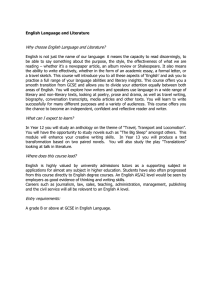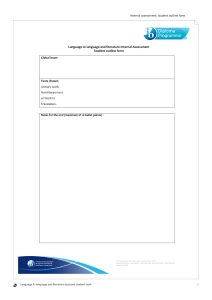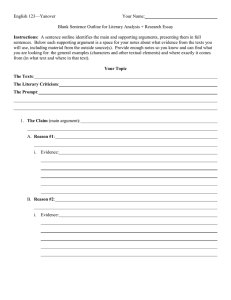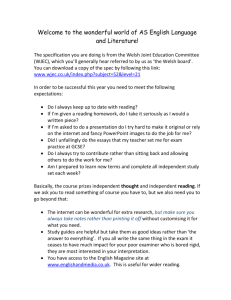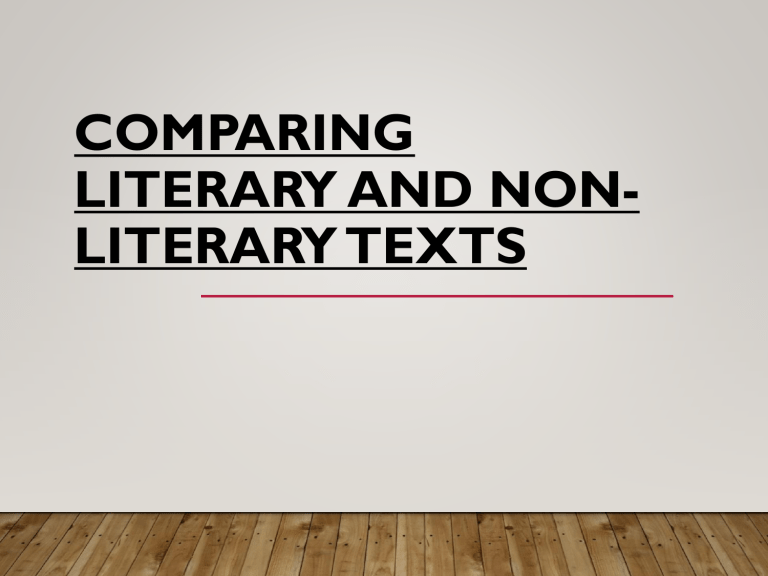
COMPARING LITERARY AND NONLITERARY TEXTS • What is a text? • What does `literary` mean? • What does `non-literary` mean? Text may be taken for a specific language medium which enables the formation of cognitive ideas with the aim of imparting information and forming/interpreting a coherent sequence of utterances. • For this reason, to create, understand and translate a text means to form a specific cross connection between its semantic contents. • Within the ambit(area) of text linguistics, text was initially viewed as an organized unit larger than a sentence which consists of a sequence morphosyntactically and semantically linked utterances unified thematically as well. This means that a text was understood as a network made of individual sentences and paragraphs. • Non-literary Text and Translation • The label “non-literary text”, as broad as it may seem, covers a wide range of texts from administrative, legal and other official documents, via economic and business texts, scientific, technical up to publicist texts. • As far as the language of non-literary texts is concerned, there is a striking tendency towards stereotypical structures and language clichés in general. Precisely these means of expressions make the non-literary style more or less formalized. • Accordingly, non-literary translation in its essence stands for a “stylistic operation which is based not on the transfer of aesthetic but pragmatic information” • From a translatological point of view, the nonliterary text corresponds to Newmark’s semantic translation which is marked by a great respect for the original tending to be “more complex, more awkward and more detailed” • Literary Text and Translation • In order to grasp the specifics of literary translation, it is deemed reasonable to look at the properties of a literary text first. These are pre-determined by the realm of literature, which has an innate capacity to appeal to one’s feelings and unfetter one’s imagination. Bearing this in mind, it might seem appropriate to pose a question why most people usually enjoy literary texts much more than their non-literary counterparts. It would not be an overstatement to suggest that literary texts guarantee entertainment on the basis of their artistic quality, provide the recipient with the author’s experience or world-view which may motivate them to think, act and re-evaluate their attitudes. • Clearly, the most important feature of a literary work of art is that it is a bearer of an aesthetic function. Literary text comes into existence as a subjectively transformed reflection of the objective reality in tune with the aesthetic-emotional intent of the author: he/she endeavours to convey his/her ideas, thoughts and emotions, which is enabled by his/her orientation towards experience. • Consequently, literary translation must be approached as “a kind of aesthetically-oriented mediated bilingual communication, which aims at producing a target text intended to communicate its own form, correspondent with the source text, and accordant with contemporary literary and translational norms of the receptor culture” • The substantial difference between the two is that whereas non-literary text is concerned with information, facts and reality, literary text comprises the world of the mind, i.e. ideas and feelings and is grounded on imagination • While non-literary texts are primarily about objects from the extra-linguistic reality, literary texts usually revolve around fictitious characters, being ontologically and structurally independent from the real world.
